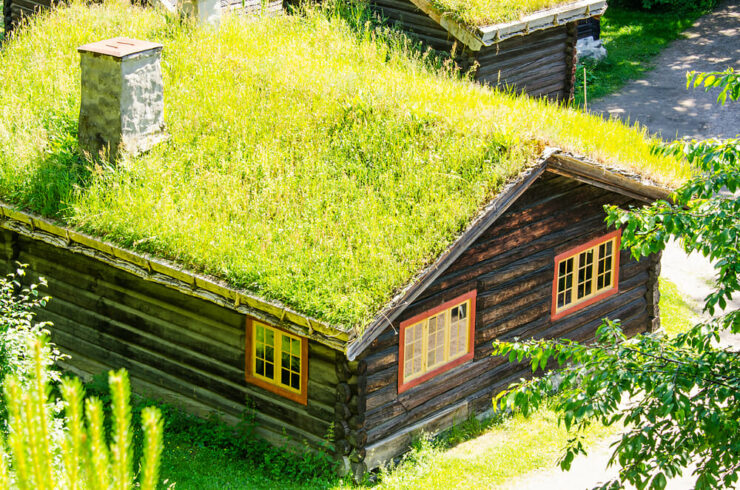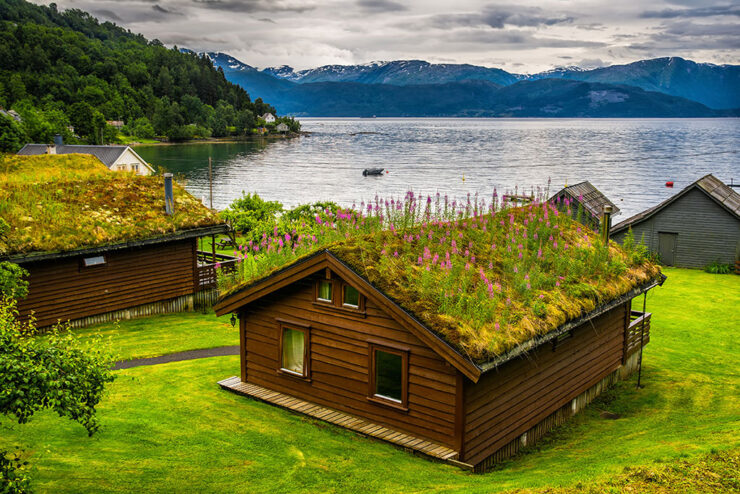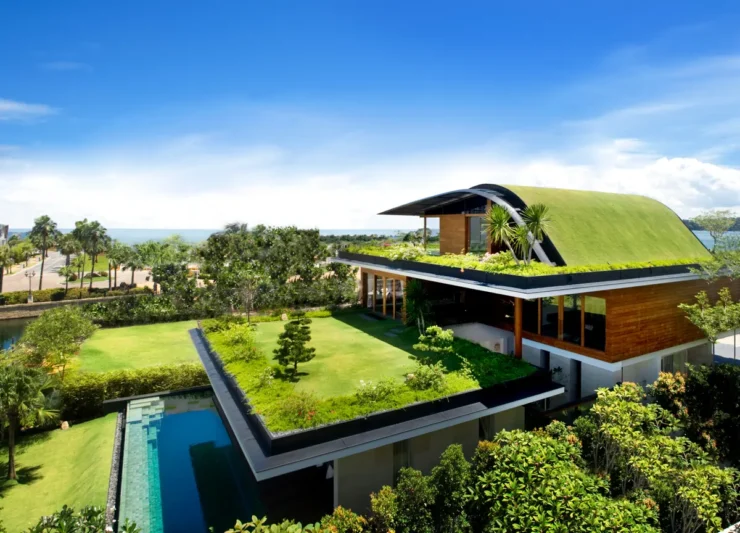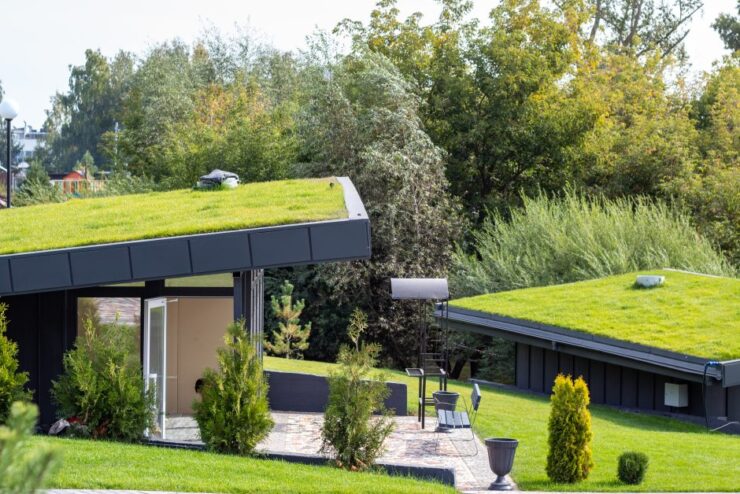As our planet confronts the escalating impacts of climate change, each choice we make in our daily lives significantly shapes the world’s future. One such vital decision pertains to the type of roofing material we utilize on our homes. Traditional roofing options, like asphalt shingles, are commonly made from non-renewable resources, and their manufacturing processes release greenhouse gasses. These detrimental effects pose an urgent call for rethinking our choices. In response, a growing number of environmentally conscious homeowners are proactively exploring eco-friendly alternatives. This blog post aims to delve into these sustainable roofing options, exploring their features and benefits. Not only do these contribute to a greener planet, but they also offer several long-term benefits to homeowners and their communities.
Benefits of Eco-Friendly Roofing

Environmentally friendly roofing materials present numerous invaluable advantages. At the forefront, they significantly reduce our dependence on non-renewable resources, thereby minimizing environmental degradation and preserving these resources for future generations. By consciously choosing materials that are recyclable or made from recycled products, we can contribute substantially to reducing waste that ends up in landfills. In terms of energy consumption, sustainable roofing materials offer superior insulation properties. Consequently, less energy is needed for heating and cooling homes, contributing to a reduction in carbon emissions and playing a crucial role in our fight against global warming. On the financial front, while eco-friendly roofing might require a higher initial investment, the long-term cost savings in terms of lower energy bills and extended lifespan make it a financially viable and indeed a sensible option.
Green Roofing
Green roofs, also known as living roofs, represent an innovative and visually appealing approach to sustainable roofing. They involve the strategic installation of a layer of vegetation on a robust, waterproof membrane atop your home. Green roofs have a multi-tiered positive impact on environmental conservation. They act as natural insulators, reducing energy usage and contributing to energy-efficient homes. They absorb and utilize rainwater, mitigating potential runoff and flooding issues in urban areas. Furthermore, they contribute to biodiversity by creating natural habitats for local wildlife. Green roofs come in two main types – extensive, which feature a thin layer of low-maintenance plants, and intensive, which have a deeper growing medium that can support a wider variety of plants, offering a veritable garden atop your home.
Solar Roofing

Solar roofing presents an exceptional, energy-efficient way to go green. By installing solar panels or solar shingles, homeowners can directly harness the sun’s abundant, renewable energy. This significantly reduces their carbon footprint and monthly energy bills, promoting sustainable living. With advancements in solar technology, such as Tesla’s solar roof tiles, harnessing solar energy has become more accessible, practical, and aesthetically pleasing than ever before. Moreover, in many locations, any excess power generated by these solar installations can often be sold back to the grid, creating a potential revenue stream for homeowners and encouraging widespread adoption of solar energy. What’s important to know is that solar roofing needs to be done by professionals. If you need a good roofing company you can find additional info here.
Recycled Roofing Materials
Utilizing recycled roofing materials presents another innovative and sustainable option for environmentally conscious homeowners. These roofing materials can be made from a variety of substances, including recycled metal and rubber. Using recycled materials for roofs is not only environmentally advantageous by effectively reusing materials that would otherwise contribute to waste, but these options are also known for their durability and longevity. For instance, recycled metal roofs can last up to 70 years and are highly resistant to diverse weather elements, making them a smart, future-proof choice for a long-lasting, eco-friendly roof.
Cool Roofs
Cool roofs, designed based on the simple principle of reflecting more sunlight and absorbing less heat, are an effective response to rising global temperatures. They are engineered to remain cooler than a standard roof, thereby reducing the need for air conditioning and contributing to energy-efficient homes. Furthermore, they help mitigate the urban heat island effect, reducing local temperatures and improving living conditions. Various cool roofing options exist, from reflective shingles to cool roof coatings, offering flexibility and adaptability. These coatings can be applied to both new and existing roofs, making cool roofs a viable option for a wide range of homes.
Sustainable Wood Shingles/Shakes

Wood shingles and shakes offer a timeless, natural aesthetic and a tangible connection with nature. However, when considering this option, it’s crucial to ensure the wood is certified by the Forest Stewardship Council (FSC). This certification indicates that the wood has been sustainably sourced, protecting forests and preserving our natural heritage. Besides their visual appeal, wood roofs also provide good insulative properties, contributing to an energy-efficient home. Compared to traditional shingles, sustainably sourced wood shingles and shakes have a longer lifespan, making them a cost-effective, eco-friendly choice.
Living Sustainably with Roofing Choices
Your choice of roofing material is integral to your overall sustainability efforts and the eco-friendly footprint of your home. To maximize the benefits of eco-friendly roofing, it’s important to consider various factors such as your local climate, the orientation of your home, and local building codes. Opting for local or recycled materials can further reduce the environmental impact associated with the transportation of roofing materials. Furthermore, combining different strategies, like installing a green roof along with solar panels, can greatly enhance your home’s energy efficiency, leading to long-term energy savings.
Government Incentives and Rebates
Various government programs and initiatives exist that offer incentives to homeowners who adopt eco-friendly roofing. These include tax credits, rebates, and grants. These incentives aim to encourage the installation of sustainable roofing materials, promoting a shift towards more sustainable building practices. Programs vary by location, so it’s advisable to research local options. Resources like the Database of State Incentives for Renewables & Efficiency (DSIRE) can provide a wealth of useful information, helping homeowners make informed decisions and take advantage of available incentives.
Finding Eco-Friendly Roofing Contractors

When opting for sustainable roofing, it’s vital to find a contractor with specialized knowledge and expertise in eco-friendly installations. Look for contractors who hold certifications from recognized green building organizations, a clear indication of their commitment to sustainable building practices. Before finalizing a contractor, ask about their experience with eco-friendly installations, the sustainability of their processes, and the sources of their roofing materials. Selecting an experienced, reliable contractor ensures that your eco-friendly roof is installed correctly, maximizing its benefits.
Maintaining Eco-Friendly Roofs
Proper maintenance is essential to prolong the lifespan of your eco-friendly roof and ensure it functions effectively over the years. This includes regular inspections, prompt repairs, and appropriate cleaning methods, which vary based on the specific roofing material used. Effective maintenance also reduces the need for replacement, thereby limiting the environmental impact associated with the production of new roofing materials. As such, regular, careful maintenance of your eco-friendly roof is an important aspect of sustainable living.
Conclusion
Eco-friendly roofing offers a powerful means of promoting environmental sustainability. By making informed, conscious choices about our roofing materials, we can contribute significantly to a greener, healthier future for our planet. As environmentally conscious homeowners, it’s incumbent upon us to embrace sustainable roofing options for their manifold benefits, including their potential to reshape our planet’s future. Your roof is more than just a shelter; it’s a statement of your commitment to sustainability. It’s high time we rethink our roofs for a sustainable tomorrow, driving the transformation towards a more eco-friendly world.

